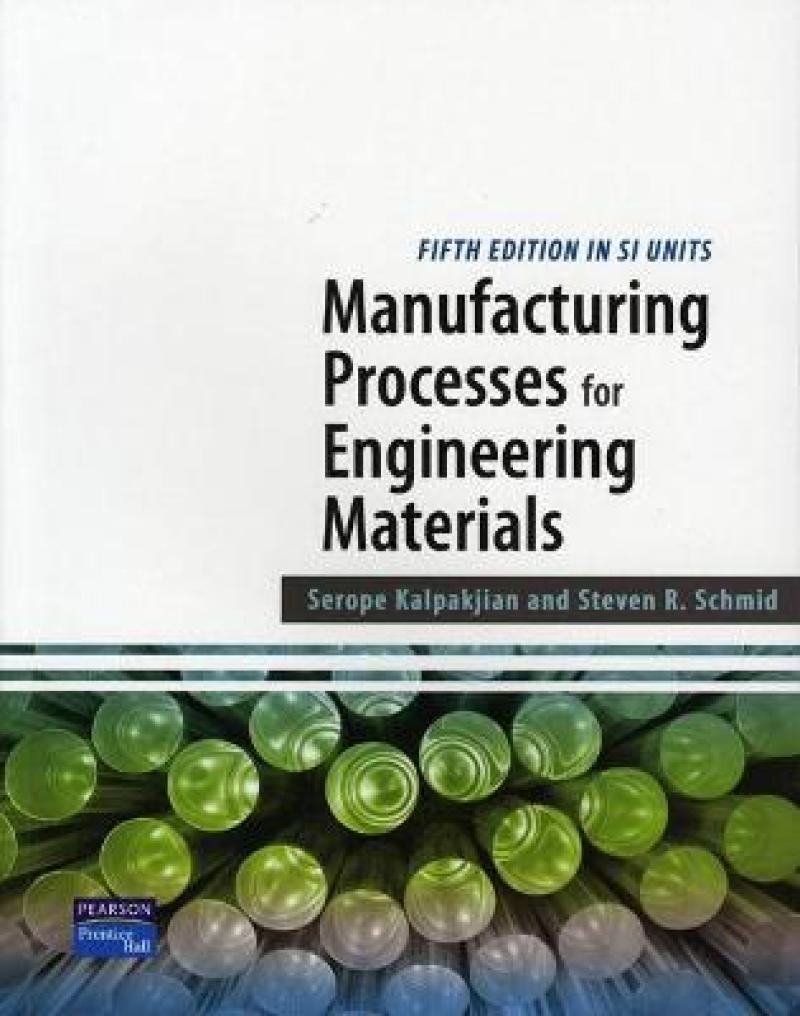This book is created for undergraduate courses in Mechanical, Industrial, Metallurgical, and Materials Engineering Programs. It is also used for graduate courses in Manufacturing Science and Engineering.
This comprehensive, up-to-date text has balanced coverage of the fundamentals of materials and processes, adopts an analytical approach, and focuses on applications in manufacturing engineering. Students using this text will be able to properly assess the capabilities, limitations, and potential of manufacturing processes and their competitive aspects.
Les mer
1 Introduction
2 Fundamentals of the mechanical behavior of materials
3 Structure and manufacturing properties of metals
4 Surfaces, tribology, dimensional characteristics, inspection, and product Quality assurance
5 Metal-casting processes and equipment; heat treatment
6 Bulk deformation processes
7 Sheet-metal forming processes
8 Material-removal pocesses: cutting
9 Material-removal processes: abrasive, chemical, electrical, and high-energy beams
10 Properties and processing of polymers and reinforced plastics; rapid prototyping and rapid tooling
11 Properties and processing of metal powders, ceramics, glasses, composites, and superconductors
12 Joining and fastening processes
13 Fabrication of microelectronic, micromechanical, and microelectromechanical devices; nanomanufacturing
14 Automation of manufacturing processes and operations
15 Computer-integrated manufacturing systems
16 Product design and manufacturing in a global competitive environment
Les mer
Case studies – At the end of each chapter; these real-world studies are interesting, up-to-date, and are taken mostly from the industry. They show how concepts learnt are applied to create everyday products. Students tap on their knowledge of the various compositions of materials and types of processes to choose the most appropriate combination to create the desired product. They demonstrate to students the relevance of the materials with real-world examples.
Clearly written and organized - Allows students to easily grasp the often complex subject matter presented.
Chapter summaries - Enable students to check their progress and understanding of the topics described.
Solutions Manual - Assists instructors with homework grading and exam material.
Les mer
NEW- Enhanced Visuals to Aid Learning, many well-annotated figures have been added and enhanced to display 3-D photo-quality detail. Several figures contain multi-angled views, close ups and graphs for clearer instruction of concepts. They allow students to have clearer visualization resulting in better understanding. See chapter 7, pages 389
NEW- 20% More Questions (especially so for those chapters on manufacturing processes) – The text now boosts a collection of more than 1,440 questions. Students now have a wider range of questions to practice and apply the concepts. Lecturers now have more questions to select from, and these can be easily modified and added as new questions to their test banks. These questions are categorized as ‘questions’, ‘problems’ and design’, which can be found at the end of each chapter.
- Questions – These questions are reinforce concepts learnt. Students are also required to give explanations of theories and processes that they have learnt in that particular chapter.
- Problems – These questions provide students the opportunity to develop their problem-solving skills and apply what they have learnt by using the specific equations or tables to derive common solutions.
- Design - These open-ended questions, based on real-life scenarios, encourage students to think of various methods of solving the problems in a critical and creative manner.
NEW- Chapter Outline in the beginning of each chapter describes briefly its objectives and contents. This overview of the different sections helps instructors to create well-linked individual lesson plans for that particular chapter. It allows students to easily revise and recall the important concepts.
NEW or Expanded Topics for the 5th edition- These topics widen and deepen the pool of the latest creditable resources for the teaching and learning of manufacturing processes. Students will be kept updated as they learn and practice on the latest technological processes. This equips them to be engineers who keep up with the fast changing manufacturing industry.
The topics are;
- Rapid prototyping and rapid tooling
- Nanomanufacturing and nanomaterials
- Micromachining
- Design considerations in manufacturing
- Fabrication of micromechanical and microelectromechanical devices
- Holonic manufacturing systems
- Life-cycle engineering and sustainable manufacturing
- Mechanics of polymer processing and welding
- Incremental forming
- Communications networks
- Taguchi methods
- Web sites of organizations for information relevant to manufacturing
NEW- Good Cross-references are provided throughout the text to aid students and to offer a broader perspective to the often-complex interrelationships of the topics described. They help instructors to better demonstrate the links of each concept and the different perspectives or dimensions of the processes. See chapter 7, page 399 (Fig 7.62) and page 400 (Fig 7,65). Also see page 401 (Example 7.10) and page 399 (Fig 7.63a)
NEW- Updated bibliographies at the end of each chapter allow instructors and students to further their research on any topic.
Les mer
Produktdetaljer
ISBN
9789810679538
Publisert
2008-04-24
Utgave
5. utgave
Utgiver
Vendor
Pearson Education Centre
Vekt
2140 gr
Høyde
204 mm
Bredde
254 mm
Dybde
38 mm
Aldersnivå
P, 06
Språk
Product language
Engelsk
Format
Product format
Heftet
Antall sider
1021
